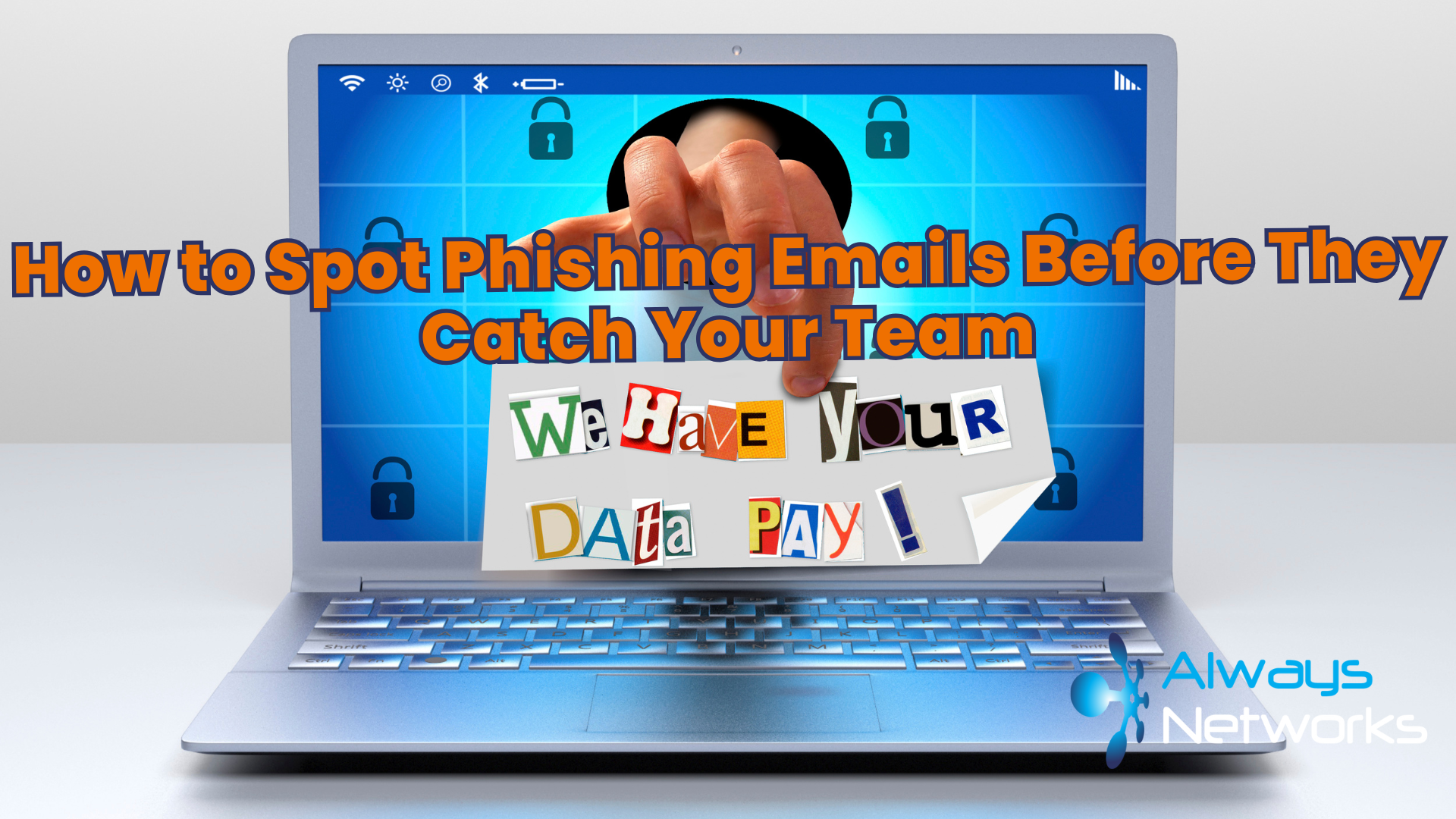Phishing emails remain one of the biggest threats to small businesses. These deceptive messages trick employees into sharing passwords, downloading malware, or transferring money to criminals. Most phishing attempts follow predictable patterns that you can train your team to recognise.
Check the Sender’s Email Address Carefully
Look beyond the display name. Criminals often use addresses that look legitimate at first glance but contain subtle differences. A genuine email from Microsoft won’t come from “microsft.com” or “microsoft-security.net”. Hover over the sender’s name to reveal the actual email address.
Watch for Urgent Language and Threats
Phishing emails create artificial urgency. They claim your account will be suspended, your security has been compromised, or immediate action is required. Legitimate companies rarely demand instant responses or threaten consequences for delays.
Examine Links Before Clicking
Hover over any links without clicking to see where they actually lead. Phishing emails often use URL shorteners or domains that mimic real companies. If an email claims to be from your bank, the link should go to your bank’s official website, not a random domain.
Look for Generic Greetings
Legitimate emails from companies you work with usually address you by name. Phishing emails often use generic greetings like “Dear Customer” or “Dear Account Holder” because criminals send them to thousands of people at once.
Question Unexpected Attachments
Be suspicious of unexpected attachments, especially executable files (.exe), compressed files (.zip), or documents that ask you to enable macros. When in doubt, contact the sender through a separate communication channel to verify they sent the attachment.
Trust Your Instincts
If something feels off about an email, it probably is. Criminals rely on people acting quickly without thinking. Taking a moment to assess an email’s legitimacy can save your business from significant damage.
Create a Simple Reporting Process
Make it easy for your team to report suspicious emails. Whether that’s forwarding them to your IT support or using your email system’s built-in reporting features, quick reporting helps protect everyone.
The Cost of Getting It Wrong
The statistics paint a sobering picture of what happens when phishing emails succeed. In 2024, 85% of businesses that experienced cyber security breaches faced phishing attempts, making it the most common attack method. These aren’t minor inconveniences – the average cost of a cyber breach to UK businesses is £5,900, though this can rise significantly for more serious incidents.
With 43% of UK businesses experiencing some form of cyber attack in the past year, and 81% of all cyber attack victims being small and medium-sized businesses, the threat is real and growing. What’s particularly frustrating is that 97% of businesses who suffer cyber attacks could have been protected with proper security measures in place.
In Yorkshire and Humber alone, there were over 2,030 reported instances of cyber crime in 2023, totalling more than £19.3 million in financial losses. That’s money that could have stayed in businesses’ bank accounts with the right precautions.
Training your team to spot these warning signs creates a human firewall that complements your technical security measures. Regular reminders and practice with real examples help keep these skills sharp.
Your staff are your first line of defence against phishing attacks. When they know what to look for, they become your strongest security asset rather than your weakest link.
Book a call with Nick:



